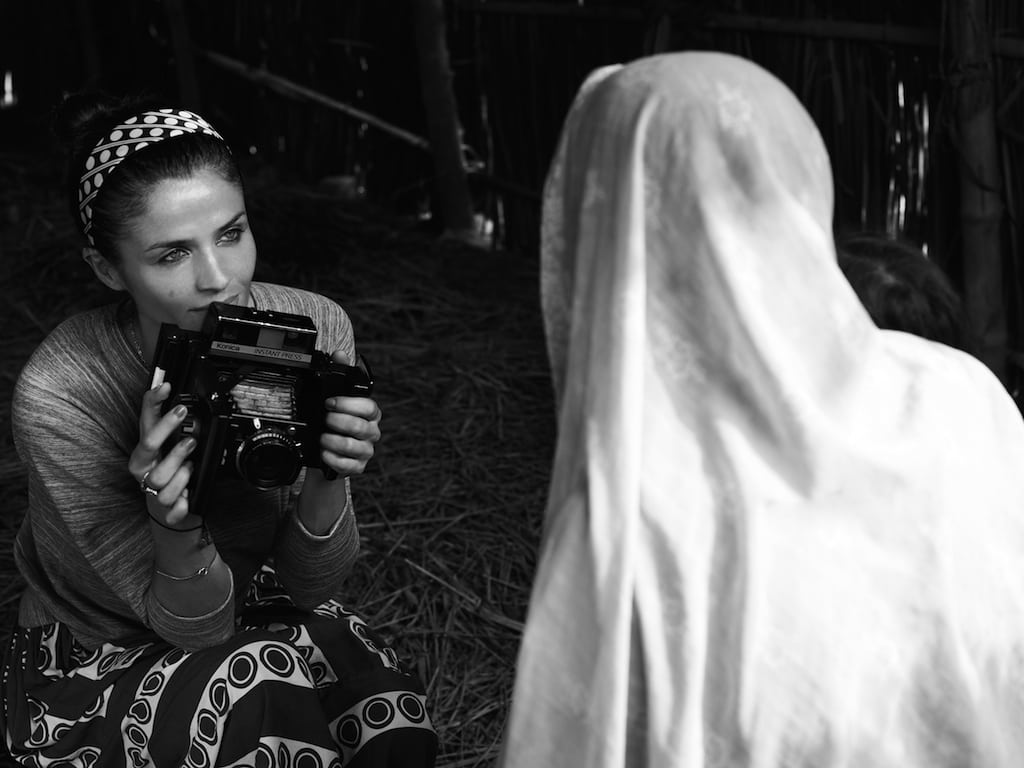Interview: How Starwood Hotels Sells Luxury to a Diverse Consumer Base

Skift Take
The hotel luxury sector is undergoing seismic shifts in terms of product development, service culture and brand communications, driven by new emerging source markets and a broader diversity of luxury travelers than ever before.
Few people have a better understanding of those shifts than Starwood Hotels’ Paul James, global brand leader for W Hotels, St. Regis Hotels, and the Starwood Luxury Collection. Because he oversees three diverse brands—all catering to upscale clientele but with vastly different deliveries—we reached out to him for an industry update on luxury travel trends in 2014.
In 2008, James says Starwood’s top brass gathered to discuss the future of luxury hospitality and the brand’s role in it. Part of that was inspired by the rapid success of W Hotels, which since its inception had attracted a higher guest economic bracket than originally anticipated.
For everyone in those 2008 meetings, it was clearly evident that the 21st century, high-worth traveler did not look, act or purchase travel like previous generations. These new luxury seekers were younger, design savvy, tech dependent, more global, and a lot of them were women. Most important, especially among Westerners, they dismissed traditional rules of formality.
A conscious decision was made to bump W Hotels up into the luxury space because its average daily rate in high-demand markets was sometimes approaching those for the Luxury Collection and St. Regis. When it opened in 2009, the all-suite W South Beach became the brand’s flagship and signaled W Hotels’ entrance into the true luxury segment.
“The journey of luxury hospitality has been moving very rapidly over the last five years,” says James. “It’s this shift from classic, product-led luxury to individual, personalized and experience-led luxury. And I think as we’ve seen new markets open up to luxury, they’re opening up to this new form of luxury, so that’s speeding up the process even quicker.”
St. Regis and Luxury Collection, meanwhile, were firmly established among the top tiers of hospitality in 2008. But again drawing inspiration from W’s playbook, both brands developed new online content marketing programs and on-property programming to provide material for similar brand storytelling and lifestyle messaging.
For example, the sublime 15-minute film “Here” produced for the Luxury Collection in 2012 depicts a young woman played by supermodel Agyness Deyn following the invites of an unseen paramour through Equinox Resort in Vermont, The Phoenician Scottsdale, and Royal Hawaiian in Waikiki. The quality of the production, the alluring story and drop-dead scenery earned the film over 250,000 views to date.
Luxury Collection followed that up with the Global Explorers series of “Travel Stories” videos featuring dozens of tourism, lifestyle and media personalities describing their values revolving around travel. Most recently, the Luxury Collection team traveled with ex-model Helena Christensen for a photo tour through the brand’s three properties in Peru.
At St. Regis, the innovative St. Regis Aficionado program designs immersive local excursions at all of the hotels, categorized by themes ranging from food to fashion to art. James says a new website for that program should launch by December.
And W continues to break new ground in content marketing with ambitious film productions like the Four Stories series, co-created in collaboration with Intel and director Roman Coppola. The four short movies provide a platform for emerging directors, and they drive exposure to a new audience for the W Hotels brand and properties in Washington, D.C., Hollywood, Doha, Mexico City, and the Maldives.
“For the luxury traveler, I think these ideas of scarcity and craft and stories, all of these pieces, are still there,” says James. “There’s just more avenues for expressing them. I think the fundamental definition of a luxury experience is that it’s personal. It always has been.”
We spoke at length with Mr. James about the evolution of the three Starwood Hotels luxury brands and luxury travel trends in general. Here is an excerpt from that discussion.
Skift: Take us back to 2008 when Starwood’s top executives discussed the changing face of luxury travel.
Paul James: We were very lucky that we sat down in 2008 and had a very deep review of what we were going to become as a luxury operator. Because maybe then we had 60 or so hotels that you could define as luxury properties. But when we looked at going from 60 to 200, which is where we will be by the end of 2016, we had to have a much broader understanding of not only who our existing customer was, but where our future customer was coming from.
So we could see these trends even back in 2008. We had plenty of data and we did focus groups to understand the difference between the established consumer base, who would continue to come to hotels like Gritti Palace in Italy, and how that would be supplemented by different audiences.
And as we’ve seen in Venice, we’ve had a great occupancy over the last year because in addition to the general rise in demand during peak periods, the Chinese are traveling in what is usually a down season from a U.S. and European travel model. And so our business mix has really balanced out.
Skift: How have you shifted your definition of Starwood’s luxury consumer?
James: Based on all this data that this new customer we call “Gen Luxury” was more diverse, more global and better educated, we were able to say when we opened St. Regis Bal Harbour, for example, that this hotel was going to get a lot of business from Latin America. It was going to have a lot of families. And I remember standing there the day the doors opened and the first customer who walked in was a Brazilian CEO, and the second customer was a six-year-old girl with her parents. It was kind of like, this is our research in motion.
Even in New York at a classic luxury hotel like The St. Regis New York, when we started this process in 2008, 80% of our customers were American, and 80% of them were men. About 50% of our customers are American now, and 40% are women. So you see that fundamental shift, and that’s the reason why the demand for luxury is higher than it’s ever been, it’s just coming from more sources.
Skift: When you say today’s luxury traveler is more experiential-led, how do St. Regis and Luxury Collection deliver local travel experiences?
James: We talk about the shift from product to experiences and that is one of the ways that comes to the fore, if you think about the demand to travel like a local.
For the Luxury Collection, these are individual properties that extract their values because of who they are, where they are, and what they know. The two packages we’ve had consistently at all of our properties in the Luxury Collection for the last five years have been Epicurean Experiences and Destination Discovery. One is an opportunity to go off with a sommelier or with a chef to somewhere like a local vineyard. The other with a concierge to go and explore the city. So bringing those things alive in the local destinations are absolutely essential.
The St. Regis Aficionado program is a fundamental way in which we push opportunities for one-off local occasions or moments for all of our guests. The new website will be out hopefully by the end of this year for Aficionado, which will give us a much better platform for mobile devices. All of our hotels participate and it’s a core part of our proposition as a brand.
Skift: The first W Hotels product wasn’t defined as luxury at the time, whereas the new W assets over the last five years are. How is Starwood building consistency across the brand in terms of product quality?
James: When we talk about Gen Luxury and the new luxury consumer, I think what Barry [Sternlicht] saw 15 years ago when the first W opened in New York, was the pre-tremor of this change. The customer who was flocking through the doors was the third generation of business owners, business leaders, social leaders, whatever you want to call them, who had grown up in a world that was liberated from some of the constraints of traditional business and traditional society.
So they’re the first leaders who had taken off their ties and said, “I don’t have to go to The Met, I don’t like the opera.” That was who Barry was talking to, and a lot of these guys were starting off in their careers 15, 16 years ago, and they already knew who they were going to be. So, although those first hotels were very much an alternative to Marriott or Hilton, where people said, “This looks a lot more like me,” it was an insight for us. And as new markets have come through, this new generation of luxury consumers looks a heck of a lot more like those people.
The W Hotels’ focus on what’s new, what’s next, music, fashion, design, it talked to that audience. And product-wise, you’re quite right. The product was very much in that upper upscale space at the time, but now we’re at the front end of a major renovation across North America to update that initial asset base.
Category-wise, they’re not all of the sudden going to change into St. Regis’s, but they’ll migrate a little bit further with these updates. And certainly with our Insiders and Whatever/Whenever [brand pillars], you’ll see elements of those evolving considerably.
But yes, South Beach, Barcelona, Singapore, Maldives, what’s being built today is without doubt a luxury hotel company. And you can see that in San Diego, when you walk into that new Living Room [lobby], it’s got that vibrancy, it’s got that immediacy, and that sort of energy that you would expect from W today.
Skift: How has St. Regis Hotels adapted to the next generation luxury traveler?
James: It’s interesting because St. Regis as a brand is only 15 years old. So it’s not got the heritage challenges that perhaps hotel companies that have been running luxury properties might have. Because up until 1999, it was solely one hotel, St. Regis New York. And the St. Regis New York like all luxury hotels was able to evolve its offer for changing generations. You know, it lived through 13 recessions. In 1935 and today, it’s the number one or number two in market.
So in 1999 when Starwood sat down and said what does this look like as a brand, they were already starting to say, because of insights from W particularly, there are things going on in this market where we need to be a little less formal.
But this is a high-service brand, so although there might be less white linen cloths and maybe less white gloves on the butlers, and the formality of yesteryear has definitely gone away, this is high-touch hospitality. So your butler who is assigned to look after you, and all of the things you want and need during that stay, is there to make that happen. And to understand that in Asia, if you’re an early adopter of wealth in China, you actually want a lot of formality and respect in the way you’re treated and the hotel teams approach you.
So it is less formal. It is much less rigid. It absolutely understands that our customer is younger, more global, more diverse, and there’s an awful lot more families. But they still have the ability to deliver the individual attention and service that a great luxury hotel does.
Skift: Is it a mistake to suggest, like some in the industry have, that Millennial/Gen Y travelers are not as interested in a more formal luxury experience like St. Regis?
James: I think about 42% of St. Regis customers are under the age of 40. The first guest who booked into The St. Regis New York presidential suite after it reopened following the renovation was 19. I can go on.
Skift: How is Starwood Luxury Collection positioned and differentiated in the luxury travel marketplace?
James: The Luxury Collection has always had the most loyal following within Starwood, because the experience is so compelling and it’s a visceral sense of wow, I always say. Even if the properties are very diverse experiences, the emotional response is the same. So there’s always been this really passionate fan base, and we’ve really focused on being a much stronger curator of the brand. And making sure the hotels appropriately reflect the rest of the hotels in the brand.
We’ve invested Starwood’s own capital in refreshing and understanding how we reposition these classic palaces in Europe, for example, for these new generations of travelers. A quarter of a billion dollars has been spent restoring some of these great hotels with amazing response from all over the world in all age groups.
Skift: In terms of online brand communications, the Luxury Collection has been creating some pretty cool content. Is that driving business to the properties?
James: That shift in luxury travel today, that movement has been supported by social media, because if you think about it, most brands have had to come up through a traditional brand hierarchy. This is about culture, it’s about art, it’s about a passion for travel. And digital and social media gave us the opportunity to push it so far, and then, of course, the fans you get take that and they share it.
Luxury Collection is frequently the brand with the most shared content in Starwood. You know, people saying: “Have you seen this amazing pool? Have you seen this amazing restaurant? Have you seen this amazing property?” And then that starts to get moved around the social networks. So the brand has really been able to take its storytelling values, and present them on different platforms, which has provided a huge amount of awareness.
“Here” was watched over 250,000 times. I’m not sure what else the Luxury Collection has done that reached 250,000 people. And they watched over eight minutes of the 15-minute movie in order to get the clicks on that.
So yes, in terms of brand awareness, the measures are still fairly clunky in the industry, but the best measures that are available tell us that, over the last three years that we’ve invested heavily in this type of activity, it has massively built awareness.
So I’m not sure that this is a space where you would say, “I do this and it results in a 2.5% increase in RPI (Revenue Per Available Room Index),” but it builds values that are shareable and that’s kind of what’s key. “Here” was the most significant statement for the Luxury Collection.
Skift: Most of the new investment in content seems to revolve around the Global Explorers website and the Travel Stories videos. Can you update us on that?
James: With Travel Stories, it’s about influencers not talking about Luxury Collection but talking about their travel experiences and their approach to travel. It started in the States, but we’ve now done a European edition, a Singapore edition and a Chinese one. And this gets shared across an amazing diversity of people, so again it’s about communicating our values.
It is the reality of how you reach people now. Print still has a place but it’s these kind of investments that build people’s interests and aspirations to try some of these brands.
You’ll see a lot of continuation of these ideas at Luxury Collection, we’ve literally just launched Helena Christensen, our latest Global Explorer. That was done on the back of a tour she did to Peru, and she is half Peruvian. And so she was traveling with us and Leica, who provided the camera, to do a sort of photographic journey. We just closed the exhibition of that in New York, and that’s going to go on the road. It gives us the content from the photography and the future things we’re going to do with Helena, so you’ll see that sort of story evolving.
Skift: What else is on the horizon in terms of branded content?
James: Waris Ahluwalia, who was our first Global Explorer, just opened Rare, an amazing boutique at Gritti Palace, where he’s curated a couple dozen of really singular items from the old trade routes from Venice, and they’re displayed in the hotel for people to purchase them.
W has a couple of initiatives coming up, and I can’t tell you about them just yet, but you’ll see more. If you think about music, fashion and design, those areas are coming together with a W take on wellness and sustainability.
And for St. Regis, we’ve got major developments coming up. We continue to find that polo is an amazing platform for us to share our story as we go into new markets.
So the storytelling strategy continues and the growth continues. Istanbul is about to open for St. Regis. Beijing and Bogota are about to open for W. We just opened Luxury Collection properties in United Arab Emirates and Odessa, and we’ll be open in Beirut before the end of the year. So it’s definitely paying off in terms of performance and growth opportunities.
Greg Oates covers hotel/tourism development and travel brand media. He has toured over 1,000 hotels in 50+ countries. email / twitter





